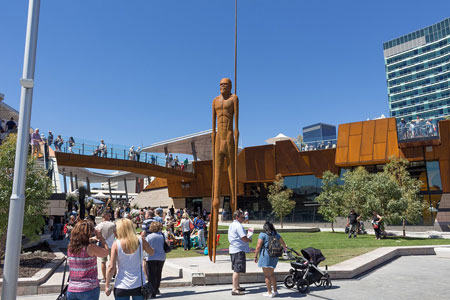Perth Translation Services » Tagalog translator » Tagalog Brochure Translation
Tagalog Brochure Translation
Perth Translation Services provides Tagalog brochure translations for businesses and government departments in Australia. As a professional translation services provider, we offer fast and quality Tagalog brochure translations, and are able to typeset Tagalog translations into existing design files.
We usually work with InDesign project folders shared by clients, and deliver multilingual brochures from a single brochure in English.
Working with local Tagalog translators, designers and typesetters, you can be assured your project gets delivered by professionals familiar with the local culture and terminology used in Australia, and any project feedback gets addressed quickly.
Tagalog Brochure Translators
Enquire with us today
Latest Testimonials


About the Tagalog Language
Tagalog is one of the main languages spoken in the Philippines. More than twenty-two million people speak it as their first language. It originally was spoken by the Tagalog people of the Philippines, who were mainly in Bulacan, Cavite, and some parts of the island of Luzon.
Tagalog is now spoken nationwide like English in the Philippines. It is a mix of Spanish, Malay, and English. It originally was used with an abugida, the Baybayin script, but now the Latin alphabet is used to write the words.
The word Tagalog is derived from the endonym taga-ilog ("river dweller"), composed of tagá- ("native of" or "from") and ilog ("river"). Linguists such as Dr. David Zorc and Dr. Robert Blust speculate that the Tagalogs and other Central Philippine ethno-linguistic groups originated in Northeastern Mindanao or the Eastern Visayas.
Possible words of Old Tagalog origin are attested in the Laguna Copperplate Inscription from the tenth century, which is largely written in Old Malay. The first known complete book to be written in Tagalog is the Doctrina Christiana (Christian Doctrine), printed in 1593. The Doctrina was written in Spanish and two transcriptions of Tagalog; one in the ancient, then-current Baybayin script and the other in an early Spanish attempt at a Latin orthography for the language.
Throughout the 333 years of Spanish rule, various grammars and dictionaries were written by Spanish clergymen. In 1610, the Dominican priest Francisco Blancas de San Jose published the “Arte y reglas de la Lengua Tagala” (which was subsequently revised with two editions in 1752 and 1832) in Bataan. In 1613, the Franciscan priest Pedro de San Buenaventura published the first Tagalog dictionary, his "Vocabulario de la Lengua Tagala" in Pila, Laguna.
The first substantial dictionary of the Tagalog language was written by the Czech Jesuit missionary Pablo Clain in the beginning of the 18th century. Clain spoke Tagalog and used it actively in several of his books. He prepared the dictionary, which he later passed over to Francisco Jansens and José Hernandez. Further compilation of his substantial work was prepared by P. Juan de Noceda and P. Pedro de Sanlucar and published as Vocabulario de la Lengua Tagala in Manila in 1754 and then repeatedly reedited, with the last edition being in 2013 in Manila.

